
8 Top-Rated Attractions & Places to Visit in Cuba
Cuba, the Caribbean's largest island, drips with history, culture, and a captivating mystique. Live music wafts through the cobbled squares in Havana's World Heritage-listed Old Town, vintage cars still cruise the streets, and the beautiful old buildings in Cuba's colonial cities evoke the feel of a country frozen in time.
Cuba also abounds in natural beauty. This vast island has more than 5,000 kilometers of coastline, much of it rimmed by dazzling beaches. Coral reefs glimmer in the turquoise waters, and Cuba's lush countryside and sublime islands have played host to presidents; provided refuge to revolutionaries; and inspired writers from around the world, Hemingway among them.
1. Varadero
Varadero is one of Cuba's most famous beach destinations, and home to one of the best beaches in the Caribbean. It stretches along the Peninsula de Hicacos, which juts into the sea off the north coast; a drawbridge connects it to the mainland. More than 50 hotels line this popular palm-fringed strip, and its magnificent white-sand beaches draw visitors from around the world.
Varadero highlights include Parque Ecológico Varahicacos (Varadero Ecological Park), and its two caves, Cueva de Ambrosio and Cueva de Musulmanes. Also in Varadero, the peaceful Parque Josone is home to lush flower gardens, a restaurant, swimming pool, and a small lake where visitors can paddle about in rowboats.
Other popular things to do, besides diving and snorkeling, are deep-sea fishing, golf, skydiving, and day trips to cultural attractions.
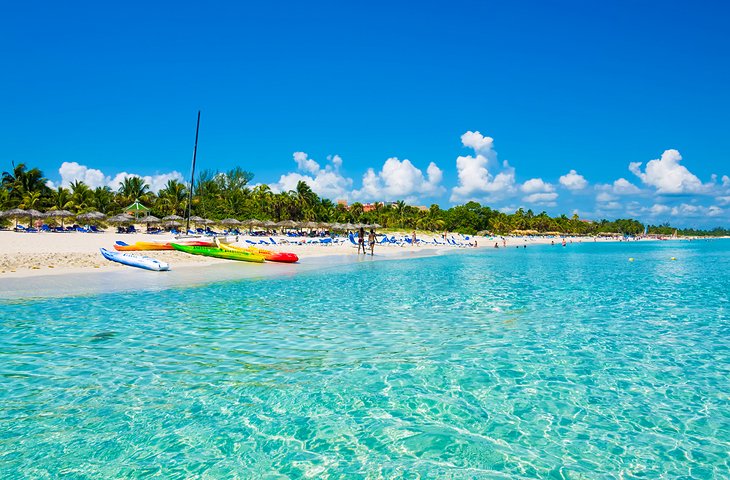
2. Trinidad
Exploring the town of Trinidad, Cuba, a UNESCO World Heritage Site, is like stepping back in time. The beautifully restored buildings and cobblestone streets in the city center exude a quaint colonial feel. Much of the architecture dates from the 17th to the 19th centuries, when Trinidad prospered from both the sugar and slave trades.Today, Trinidad is one of the best cities in Cuba to visit, apart from Havana. You can soak up its lively ambience in the cobblestone Plaza Mayor, the city's central square. Above the square stands the neoclassical Church of the Holy Trinity (Iglesia Parroquial de la Santisima Trinidad).
Other Trinidad highlights are the Church and Monastery of Saint Francis (Iglesia y Convento de San Francisco), with its distinctive bell tower; the Museum of Colonial Architecture (Museo de Arquitectura Colonial); the art gallery at the Casa de Aldeman Ortiz; and the Palacio Brunet, a grand home built in 1812 and still featuring original frescoes and marble floors.
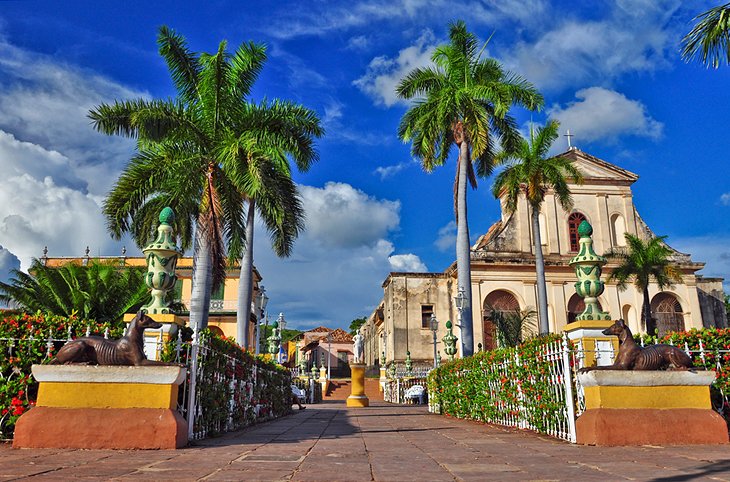
3. Guardalavaca
Rimmed by glittering beaches, Guardalavaca, in the Holguin province, is quieter and more remote than Varadero. Lush foliage fringes the sweeping strand of beach here, providing plenty of shady patches for those seeking respite from the tropical sun. Divers and snorkelers can explore a plethora of sea life along the coral reefs.
Day trips from Guardalavaca include jungle adventures, sailing trips, and sightseeing tours of Santiago de Cuba. West of Guardalavaca, Bahia de Naranjo encompasses a large slice of coast and three islands, including Cayo Naranjo with the popular Dolphinarium, which offers close-up encounters with these gregarious creatures.
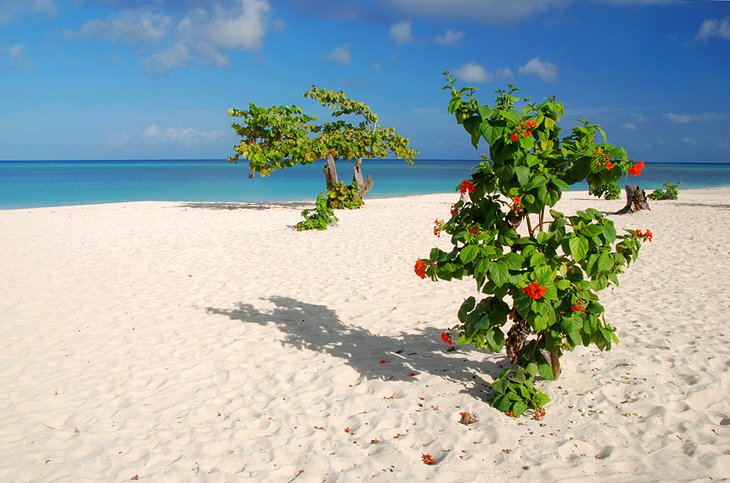
4. Cayo Coco
Cayo Coco is another of Cuba's idyllic beach destinations and one of its most isolated. The island starred in Hemingway's novels, Islands in the Stream and The Old Man and the Sea, along with nearby Cayo Guillermo.As part of the Jardines del Rey, the combined archipelago of Sabana-Camaguey, Cayo Coco is connected to the mainland by a bridge, though most visitors arrive by air.
Sun-splashed beaches are the prime attraction. Playa Los Flamencos, on the Atlantic side of the island, is a standout with its five-kilometer strand of sun-bleached sand, while the quiet and undeveloped Playa Prohibida offers a peaceful nature trail. The island also offers excellent birding.
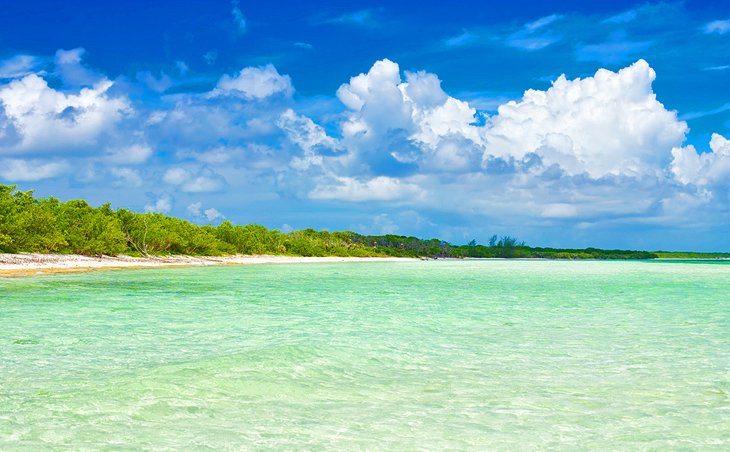
5. Parque Nacional Viñales (Valle de Viñales)
A UNESCO World Heritage Site, the Parque Nacional Viñales is a beautiful, verdant valley in the Sierra de los Organos, north of Pinar del Rio. Steep limestone hills, called mogotes, slice through the valleys, creating a dramatic landscape.
The valley floors in the Parque Nacional Viñales are agricultural areas where tobacco, fruit, and vegetables are grown. For outdoor enthusiasts, the park offers fantastic hiking and horseback riding in the hills.
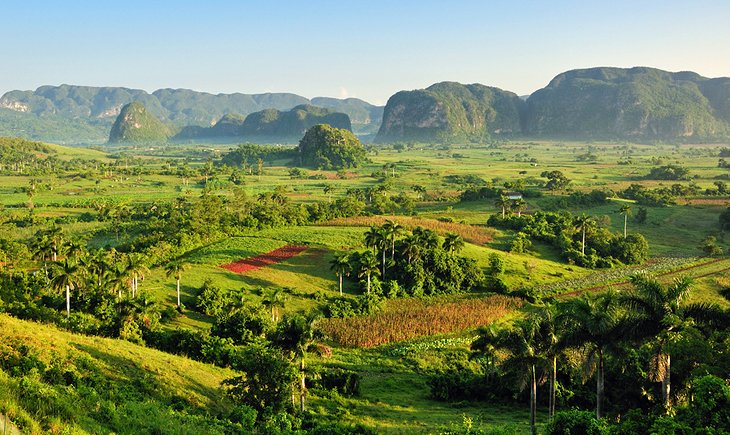
6. Baracoa
One of the highlights of eastern Cuba is beautiful Baracoa, the oldest city in the country. It was founded in 1511 in the province of Guantanamo, and construction began on the first church here around that time. Cut off from much of the outside world until the 1960s, when the La Farola highway was built, the city still has a remote feel.
Today, visitors come here for the charming colonial architecture and lush countryside, where waterfalls and pretty beaches provide a cool counterpoint to the steamy jungle. The flat-topped peak of El Yunque presides over all this tropical beauty, beckoning hikers to take the guided ascent to its 589-meter summit. The hillside is a UNESCO Biosphere Reserve where rare birds and plants thrive.
To really appreciate the spectacular scenery, take a drive down the winding La Farola highway, a 49-kilometer stretch from Baracoa over the mountains to Cajobabo.
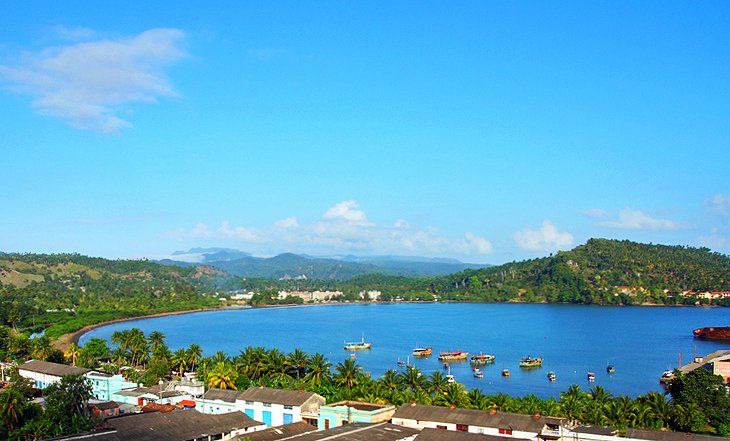
7. Che Guevara Mausoleum, Santa Clara
When beach towns and resorts all start to seem the same and you're looking for unique things to do in Cuba, Santa Clara will add some depth to your Cuban itinerary. This is the famous site of the last guerrilla battle led by Che Guevara in 1958.
Che's body was laid to rest here, and his mausoleum (Mausoleo del Che Guevara) and monument, the Memorial Comandante Ernesto "Che" Guevara, are the town's big attractions. Etched on the bronze statue of Che Guevara in Plaza de la Revolucion is his final letter to Fidel Castro, while the mausoleum lies beneath.Adjacent to the monument, the Museo Historico de la Revolucion exhibits some of Che's personal items. Che fans should also see the poignant Monumento a la Toma del Tren Blindado, a small boxcar museum and the site of the final battle between Che Guevara and the Batista troops.

8. Castillo de San Pedro del Morro, Santiago de Cuba
A UNESCO World Heritage Site, Castillo del Morro is one of the best-preserved Spanish fortresses of the 17th century. It stands at the entrance to the Bay of Santiago, about 10 kilometers southwest of Santiago de Cuba, the country's second largest city.
Perched high atop a cliff, the structure was designed in 1587, but took decades to build and was finally completed at the end of the 17th century. It was originally intended to protect against pirate attacks, but also served as a prison in the late 1700s before being once again converted into a fortress.
Today, you can explore the many different levels of the fort, learn about pirates and the fort history in the small museum, and enjoy impressive views over the bay.
Other cultural highlights of Santiago de Cuba include the Diego Velazquez Museum and Cementerio de Santa Ifigenia, home to the remains of some of Cuba's most famous military figures.




